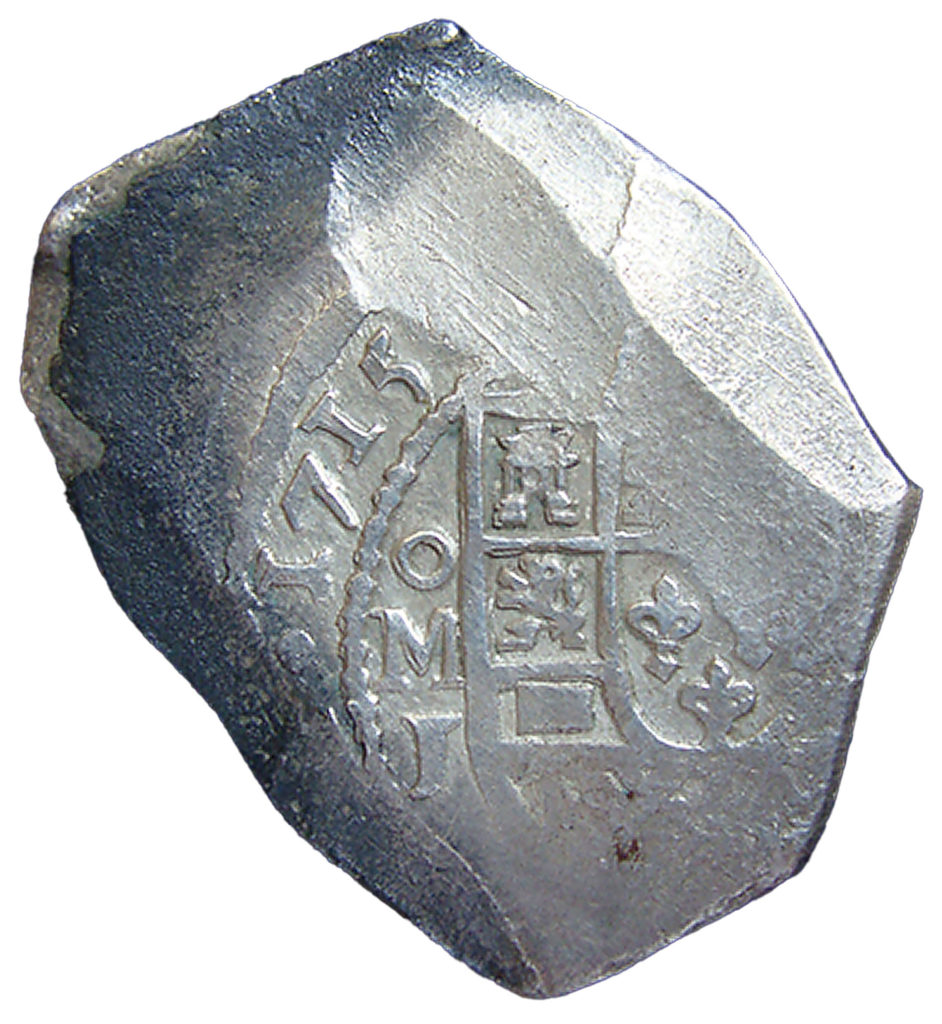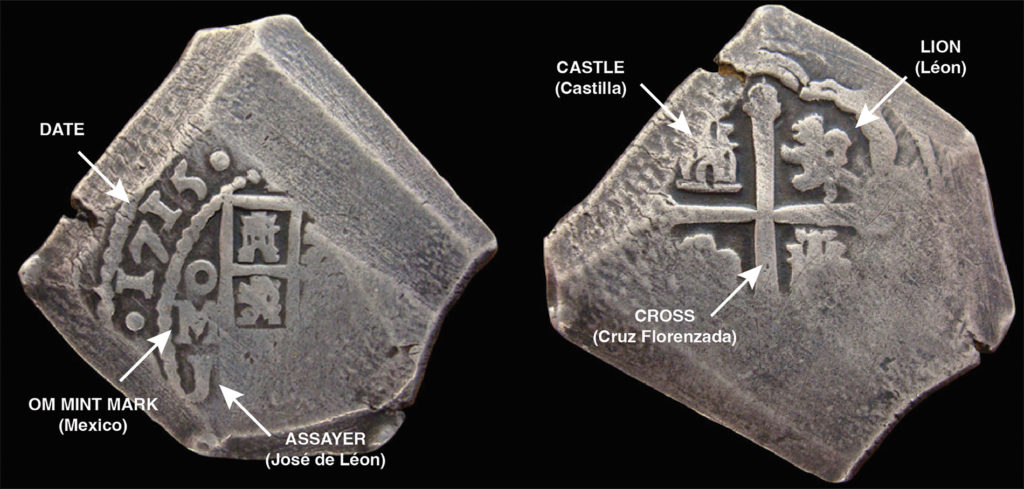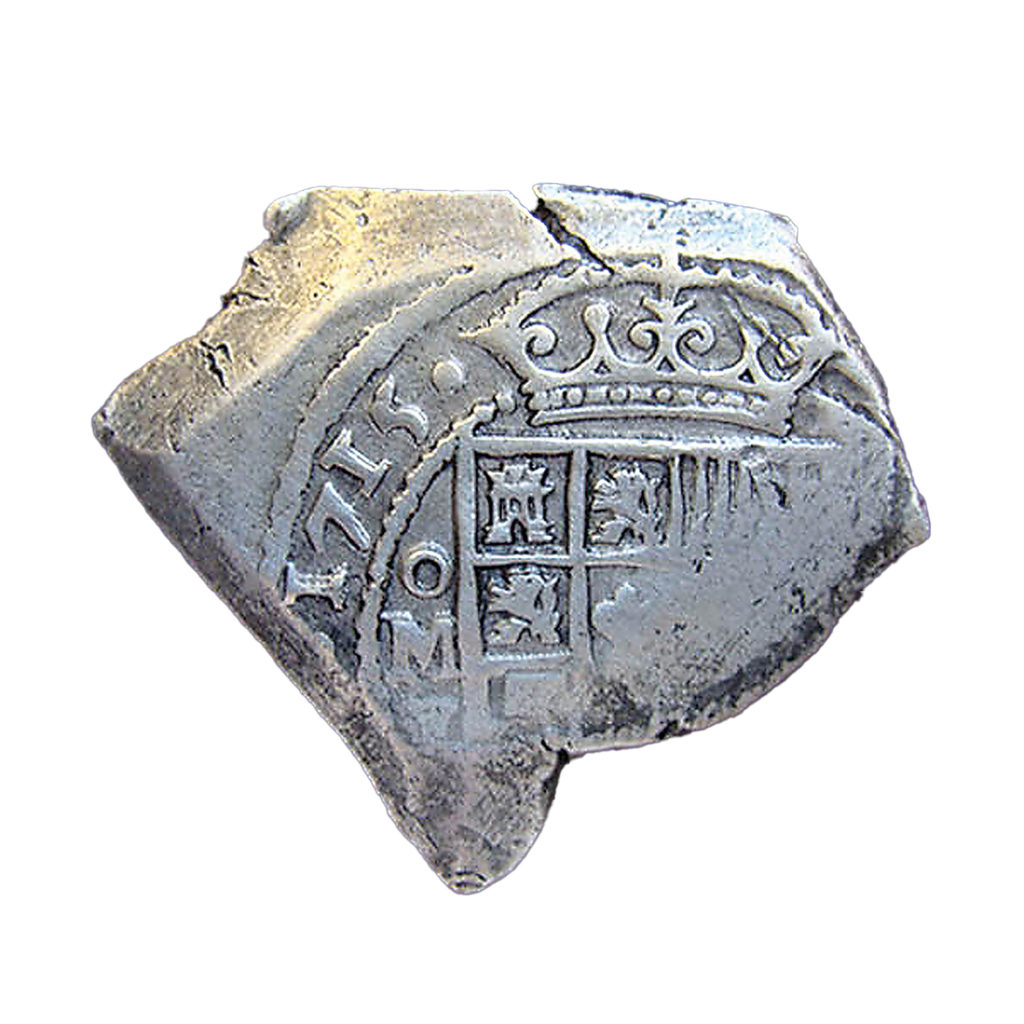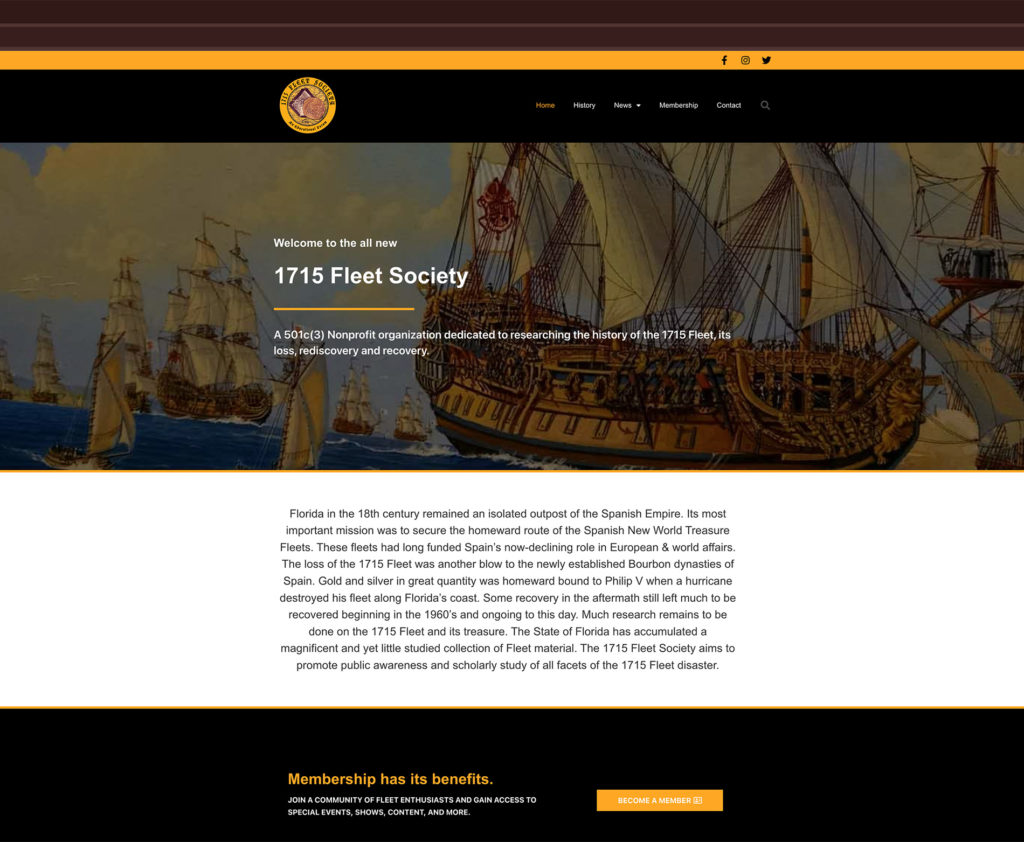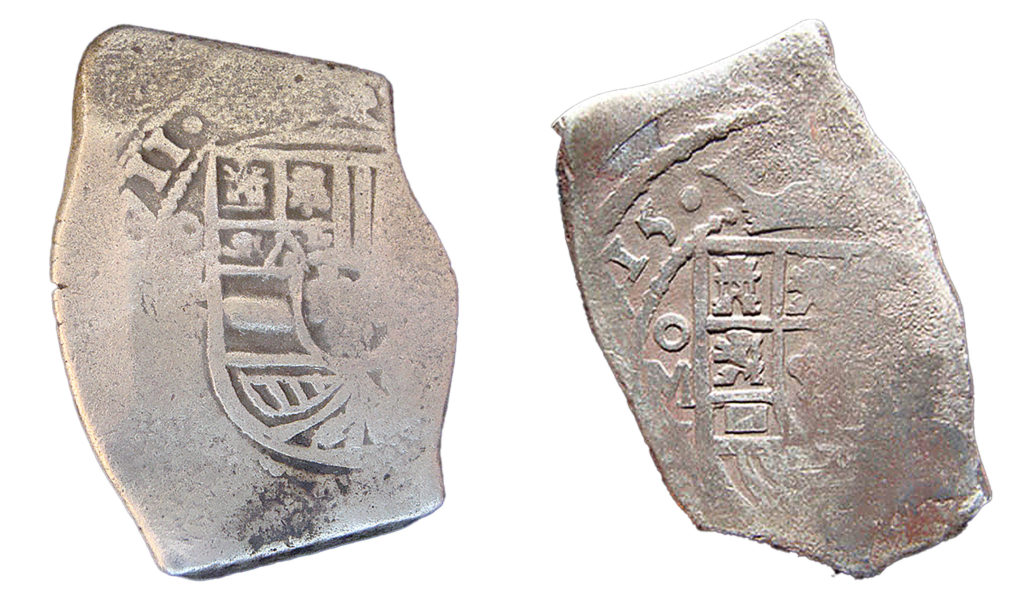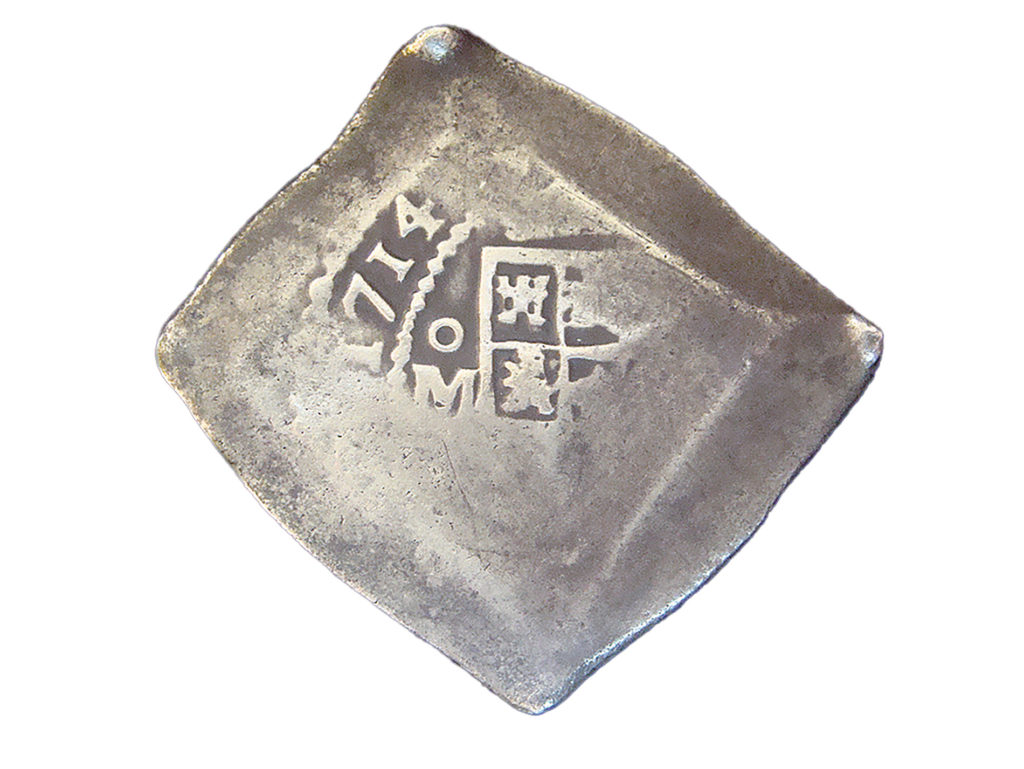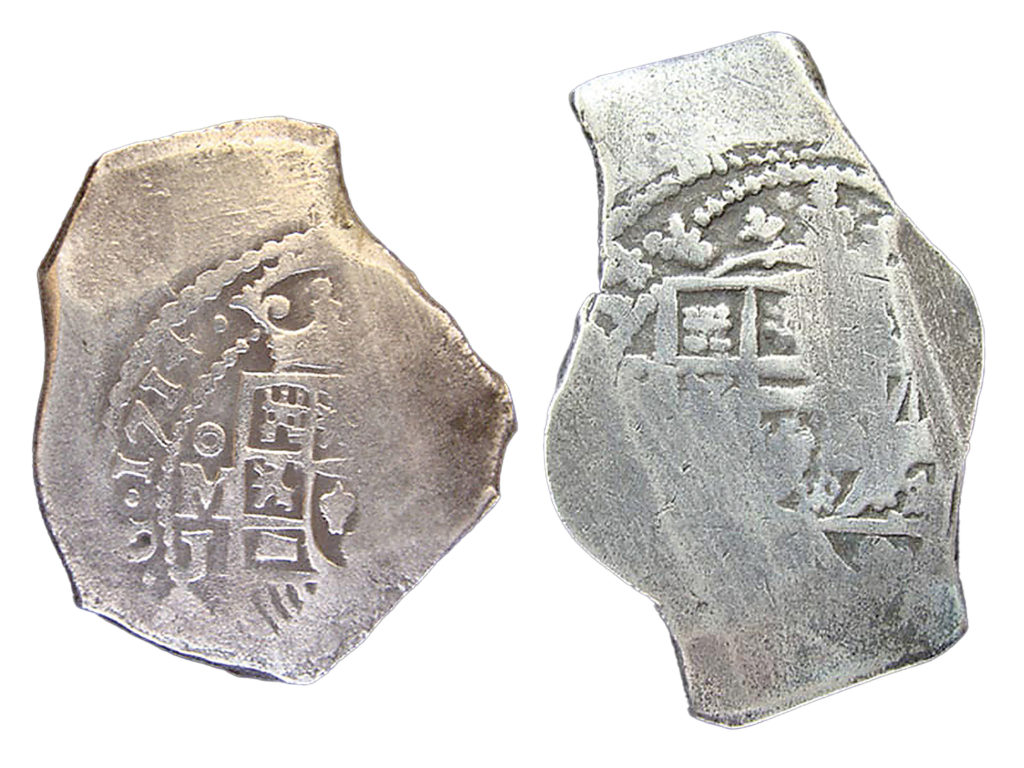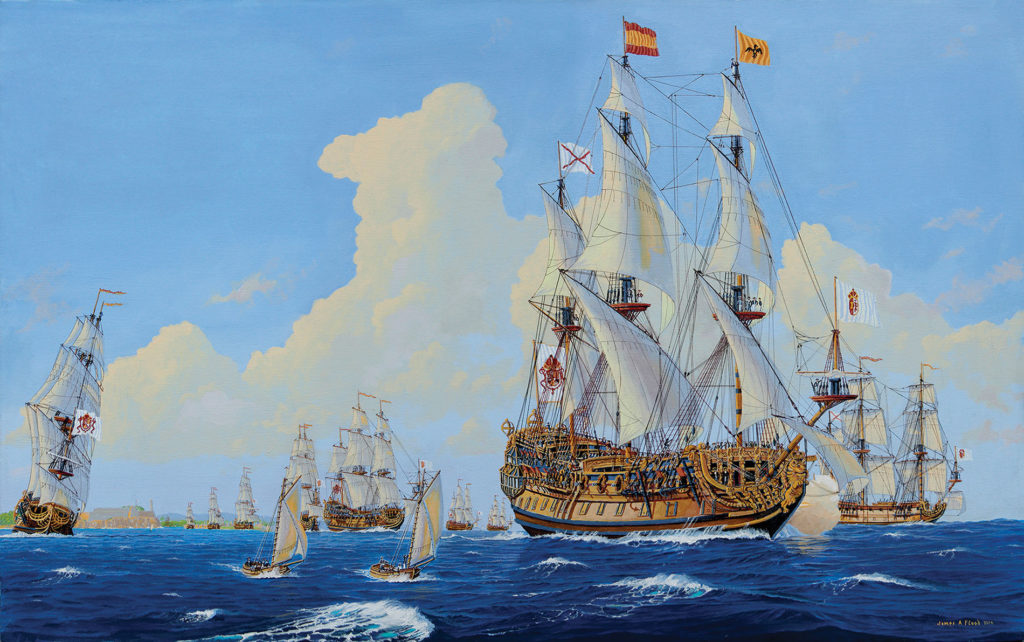
Starting a Collection of 1715 Fleet Silver Coins
by
Ben Costello
August 2024
The loss of the 1715 Spanish Treasure Fleet on July 31, 1715, ranks as one of the greatest maritime tragedies in history. The Fleet carried millions of pesos in gold and silver coins from the Spanish colonial mints of Mexico City, Lima, Potosí, and Santa Fe de Bogotá. Crudely struck by hand, these coins, collectively known as “cobs,” remained lost until coordinated salvage efforts recovered thousands of these coins beginning in the early 1960s, with recovery efforts continuing through the present.
Fleet coinage was struck in silver and gold, with the silver pieces known as reales and the gold denominated in escudos. The gold coins were produced in denominations of one, two, four, and eight escudos, while the silver coins were produced as one-half, one, two, four, and eight reales.
Currently, the demand for Fleet gold has created a market so hot that in only 10 years, the prices for all denominations of these coins have doubled and, in some instances, tripled. I find the sad reality for collectors is that Fleet gold is beyond the financial reach of many shipwreck enthusiasts interested in buying Fleet coins but working with a tighter budget.
However, there is another area of the Fleet coinage that is often overlooked by many collectors: dated Fleet silver.
Collecting Dated Fleet Silver
If you would like to own a piece of shipwreck history and cannot afford gold pieces, look no further than dated silver reales from the 1715 Fleet. Dated silver reales are nothing more than silver coins (or cobs) that bear an identifiable date. The silver coins recovered from the wreck sites of the 1715 Fleet were produced primarily at three Spanish colonial mints: Mexico City, Lima, and Potosí.
Since the overwhelming majority of the silver coins recovered from the Fleet were produced at Mexico City, I will focus this article on coins from that mint.
Although Fleet silver coins produced at Mexico City are more numerous than coins from Lima or Potosí, there are fewer that bear dates. In fact, only a tiny percentage (perhaps 1% to 2%) of coins produced at the Mexico City Mint have a readable date. This might beg you to ask the question of why emissions from the Mexico City Mint have issues with the readability of the date. It’s a result of the die design used in the production as well as the crude minting process that focused on quantity rather than quality. Conversely, coins from the Lima and Potosí Mints were produced with multiple dates, so most of these coins have identifiable dates.
Therefore, dated pieces from the Mexico City Mint have a built-in rarity factor that enhances value and profitability. But, as with all collectibles, you must buy wisely.
Getting Started with Fleet Silver
Starting a collection of dated Fleet silver from the Mexico City Mint begins with education. Educating yourself about Spanish colonial coins before you start buying is essential if you are serious about creating an exceptional collection.
There are certain characteristics about coins from the Mexico City Mint that need to be understood before your collection starts. What are the characteristics of these coins? How were these coins made? Why are they so crude? Why are so many undated? These and many other questions can be answered by doing a little research.
Some of this research can begin with two books that I recommend for individuals who are just entering the realm of collecting Fleet silver, and address many questions collectors typically have about Spanish colonial coinage.
The Practical Book of Cobs, by Daniel Frank Sedwick (4th edition, Daniel Frank Sedwick, LLC; 2007), is a helpful guide that explores topics such as design elements, mintmarks and assayers, treasure fleets, avoiding counterfeits, useful books and articles, and much more. Also recommended is Spanish Colonial Silver Coins in the Florida Collection, by Alan K. Craig (University Press of Florida, 2000). This book is an in-depth analysis of the silver coins in the State of Florida Collection, which consists of thousands of coins from the 1715 Fleet.
In addition to books, online support is also available. For example, the 1715 Fleet Society is an excellent resource whose mission is to educate the public about the historical significance of the 1715 Fleet, its loss, and its rediscovery and recovery. The society has on its website (1715fleetsociety.com) an exceptional research collection of high-quality dated specimens from the 1715 Fleet. The society is also available to help direct new collectors to reputable and knowledgeable scholars, as well as other educational resources to enhance their collecting experience.
One of the most important educational opportunities available to new collectors is personal contact with advanced collectors. Coin shows can be a great place to meet and mingle with high-end collectors. Many Spanish colonial coin dealers and collectors can be found at various coin shows every year. Attending coin shows is a great way to become part of the collecting community, which will allow a new collector to become acquainted with people whose experience can be invaluable. However, it’s important to remember that not every coin show will feature dealers and collectors of shipwreck coins. It is a good idea to familiarize yourself with what national or local shows will accommodate your needs in this area.
In summary, books, online resources, and coin shows are all valuable parts of the education process. But one of the most important steps in gaining knowledge about this area of collecting is securing a mentor who is an established collector of Fleet silver and can give you the benefit of many years of collecting experience.
Understanding the Market
I once knew a gentleman who was a collector of U.S. coins and had a respectable collection of 19th-century gold and silver. After attending a 1715 Fleet Society conference, he enthusiastically decided that he wanted to start a collection of silver from the 1715 Fleet. A year later, he contacted me to discuss his collection. He had purchased some very nice material and some not-so-nice material.
More importantly, however, he had grossly overpaid for many of his coins. Why? The reason was simple. In his enthusiasm, he started buying Fleet coins before educating himself on the market. He thought that since he knew the U.S. coin market, he could apply that knowledge to the shipwreck coin market. This is a common mistake. These markets are totally different.
Enter another collector that I know. Before purchasing any Fleet silver at all, he contacted the 1715 Fleet Society for help in locating an experienced collector who could help him start his collection. He was aware that seasoned collectors possessed one critical piece of information that he did not: they knew the market.
What does it mean to “know the market”? Knowing the market means knowing what to buy, where to buy it, whom to buy it from, what to pay, and, most importantly, whether it is authentic.
Buying Dated Fleet Silver
As I mentioned earlier, I’m focusing this survey on Fleet silver upon coins from the Mexico City Mint. That being said, there are certain factors that you should consider before purchasing a coin. What are they?
An old collector that I knew for many years summed up the key points as follows: date, weight, shape, and authenticity.
Date
Most of the dated silver from Mexico City bears dates from 1701 through 1715. Although a few examples of earlier dates exist, the bulk of the dated material from this mint is from this period.
The single date of the Mexican design, located near the edge of the coin, is unlikely to be preserved, considering the crude production style of the Mexico City Mint. The planchets were not round, meaning that full dates are not often found and consequently are highly prized. Fully dated pieces are the most valuable as well as the most profitable.
There are many more examples of partially dated coins than fully dated ones. Even though partially dated examples do not exhibit a full four-digit date, they are still very desirable. The more digits of the date that are visible, the better. The key, of course, is to make sure that the fourth digit is visible, as that is the key digit of every dated piece.
Weight
Whether or not you should purchase a dated coin can depend on the coin’s weight. It’s imperative to know what the standard full weights are for the various Spanish silver reales. The full weights for eight reales silver coins from the Mexico City Mint are as follows: eight reales are 27.46 grams, four reales weigh 13.73 grams, two reales notch in at 6.86 grams, one reale coins are 3.43 grams, and half reales register at 1.71 grams.
Due to many years of saltwater submersion, it is not surprising that Fleet silver coins are not full weight; corrosion does occur in varying degrees. Some silver coins show little corrosion, while others are so highly corroded that they are unidentifiable. With this understanding, many high-end collectors consider eight reales coins weighing more than 25.5 grams to be “full weight.” As a rule of thumb, coins of less than 24 grams are not desirable.
Shape
One of the most interesting aspects of collecting Fleet silver from the Mexico City Mint is the various shapes that are so characteristic of these coins. Robert I. Nesmith (1891-1972), who was America’s foremost authority on Spanish colonial coins during his life, said of the coins that “in their crudeness lies much of their fascination.”
This crudeness is due to the way they were made, one at a time by hand, with no two being alike. While the appeal of each shape is a matter of personal opinion, a dated piece with an interesting shape can add to its value.
Authenticity
No Fleet silver should be purchased without clear evidence of authenticity. As is the case with any area of the coin market, new buyers must be cognizant of counterfeits, which do exist among shipwreck coins.
How do you protect yourself? Historically, the authenticity of a Fleet coin had most often been established through the use of a certificate of authenticity, presumably prepared by a reputable individual who can vouch for the coin’s origin. Knowing who these individuals are is part of the education process, but their names can often be provided by an experienced collector who knows the market. Auction catalogs, photographs, or personal contact with the original finder are other ways that authenticity can be determined.
More recently, PCGS has been grading Fleet coins, serving as a reliable method for assuring buyers that they’re purchasing authentic pieces. Buying encapsulated silver is highly recommended. Purchasing Fleet silver that has been graded offers an additional comfort level that is missing when buying “raw” silver.
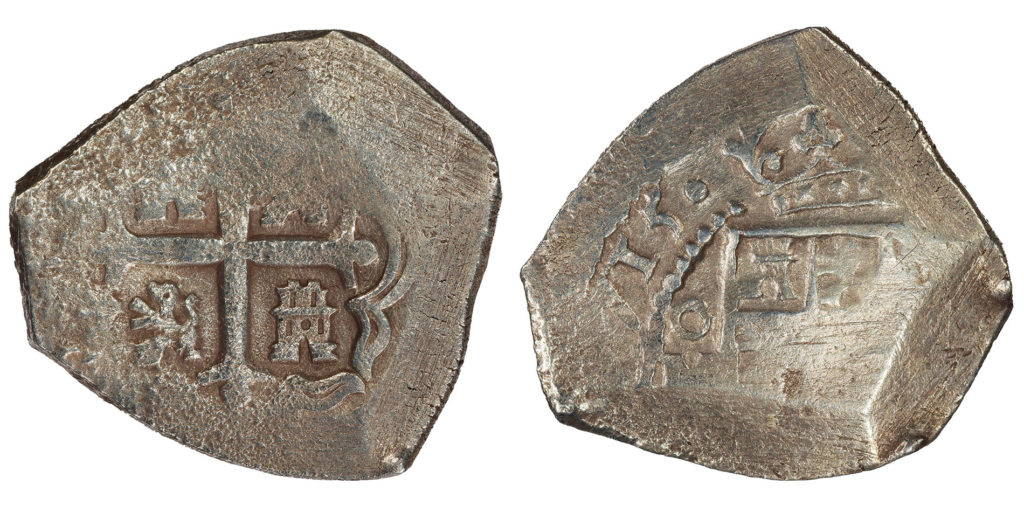
Conclusion
Buying dated Fleet silver from the Spanish colonial mint at Mexico City is a great and affordable alternative to buying Fleet gold. At present, these silver coins are far less expensive and have a rarity factor that makes them attractive as an investment opportunity. By educating yourself, knowing the market, working with an experienced collector, and buying PCGS-graded specimens, you will increase your chances of creating a first-rate collection that you will be sure to enjoy for many years to come.
Special thanks to PCGS for permitting us to reprint this article as seen in the July-August 2024 issue of PCGS Market Report. HERE is the article as published.

